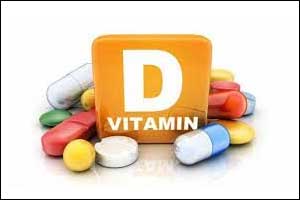- Home
- Editorial
- News
- Practice Guidelines
- Anesthesiology Guidelines
- Cancer Guidelines
- Cardiac Sciences Guidelines
- Critical Care Guidelines
- Dentistry Guidelines
- Dermatology Guidelines
- Diabetes and Endo Guidelines
- Diagnostics Guidelines
- ENT Guidelines
- Featured Practice Guidelines
- Gastroenterology Guidelines
- Geriatrics Guidelines
- Medicine Guidelines
- Nephrology Guidelines
- Neurosciences Guidelines
- Obs and Gynae Guidelines
- Ophthalmology Guidelines
- Orthopaedics Guidelines
- Paediatrics Guidelines
- Psychiatry Guidelines
- Pulmonology Guidelines
- Radiology Guidelines
- Surgery Guidelines
- Urology Guidelines
Higher Vitamin D levels lower risk of cancer : BMJ

Vitamin D helps to maintain calcium levels in the body to keep bones, teeth, and muscles healthy. While the benefits of vitamin D on bone diseases are well known, there is growing evidence that Vitamin D may benefit other chronic diseases, including some cancers. An international research team has conducted a large study of Japanese adults and found that High levels of vitamin D may be linked to a lower risk of developing cancer, including liver cancer.The study has been published in published by The BMJ.
Most studies for the role of Vit.D in cancer have been carried out in European or American populations, and evidence from Asian populations is limited.As Vitamin D concentrations and metabolism can vary by ethnicity, it is important to find out whether similar effects would be seen in non-Caucasian populations.
So an international research team, based in Japan, set out to assess whether vitamin D was associated with the risk of total and site-specific cancer.
They analyzed data from the Japan Public Health Center-based Prospective (JPHC) Study, involving 33,736 male and female participants aged between 40 to 69 years.
At the start of the study, participants provided detailed information on their medical history, diet, and lifestyle, and blood samples were taken to measure vitamin D levels.
Vitamin D levels varied depending on the time of year the sample was taken, tend to be higher during the summer and autumn months than in the winter or spring.
After accounting for this seasonal variation, samples were split into four groups, ranging from the lowest to highest levels of vitamin D.
Participants were then monitored for an average of 16 years, during which time 3,301 new cases of cancer were recorded.
After adjusting for several known cancer risk factors, such as age, weight (BMI), physical activity levels, smoking, alcohol intake and dietary factors, the researchers found that a higher level of vitamin D was associated with a lower (around 20%) relative risk of overall cancer in both men and women.
Higher vitamin D levels were also associated with a lower (30-50%) relative risk of liver cancer, and the association was more evident in men than in women.
No association was found for lung or prostate cancer, and the authors note that none of the cancers examined showed an increased risk associated with higher vitamin D levels.
Findings were largely unchanged after accounting for additional dietary factors and after further analyses to test the strength of the results.
The researchers point to some study limitations, for example, numbers of organ-specific cancers were relatively small. And while they adjusted for several known risk factors, they cannot rule out the possibility that other unmeasured (confounding) factors may have influenced the results, making it difficult to draw firm conclusions about cause and effect.
Nevertheless, key strengths include the large sample size for overall cancer, a long follow-up period and a large number of blood samples analyzed.
The authors say their findings support the theory that vitamin D may protect against the risk of cancer, but that there may be a ceiling effect, which may suggest that there are no additional benefits beyond a certain level of vitamin D.
"Further studies are needed to clarify the optimal concentrations [of vitamin D] for cancer prevention," they conclude.

Disclaimer: This site is primarily intended for healthcare professionals. Any content/information on this website does not replace the advice of medical and/or health professionals and should not be construed as medical/diagnostic advice/endorsement or prescription. Use of this site is subject to our terms of use, privacy policy, advertisement policy. © 2020 Minerva Medical Treatment Pvt Ltd